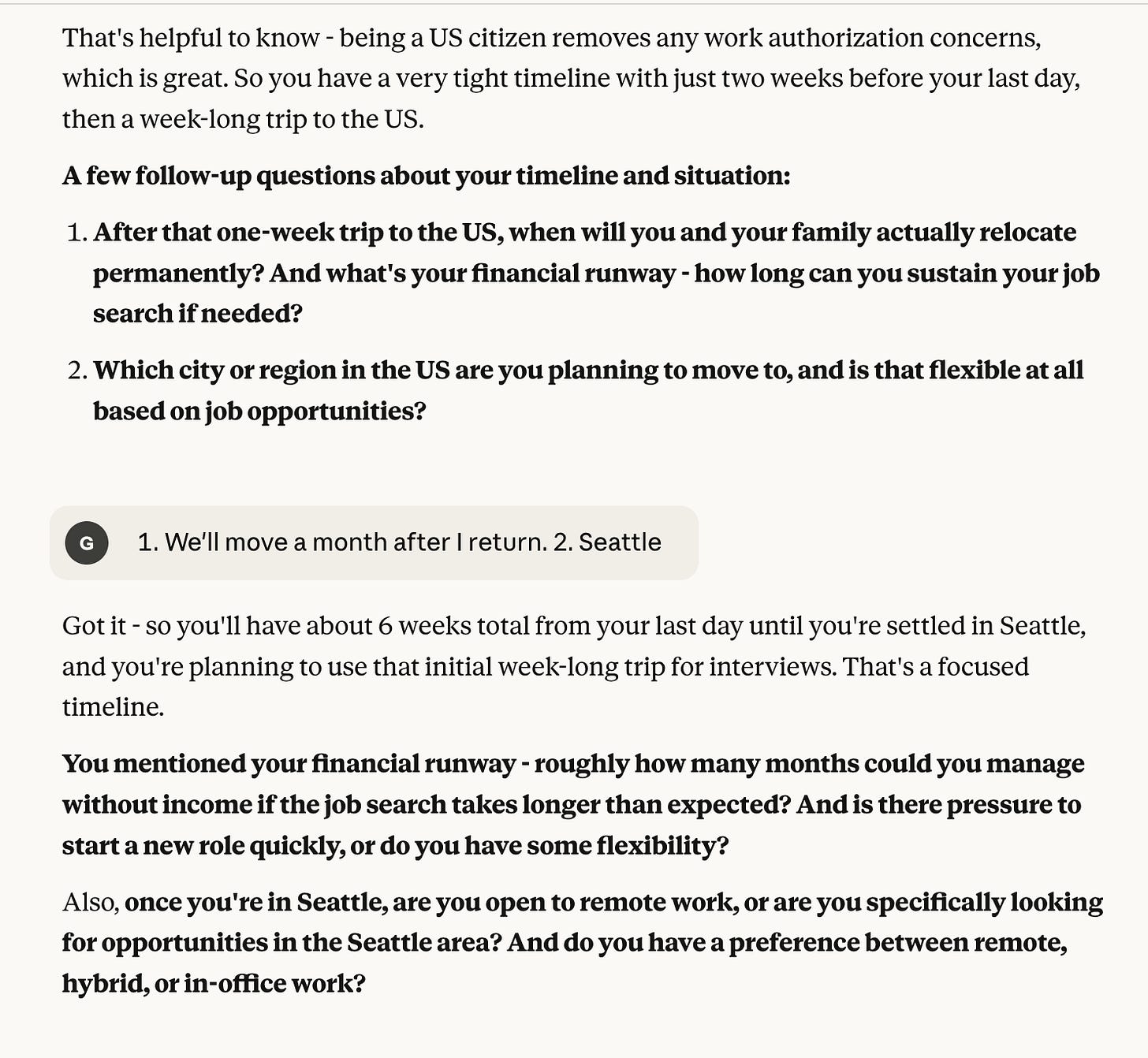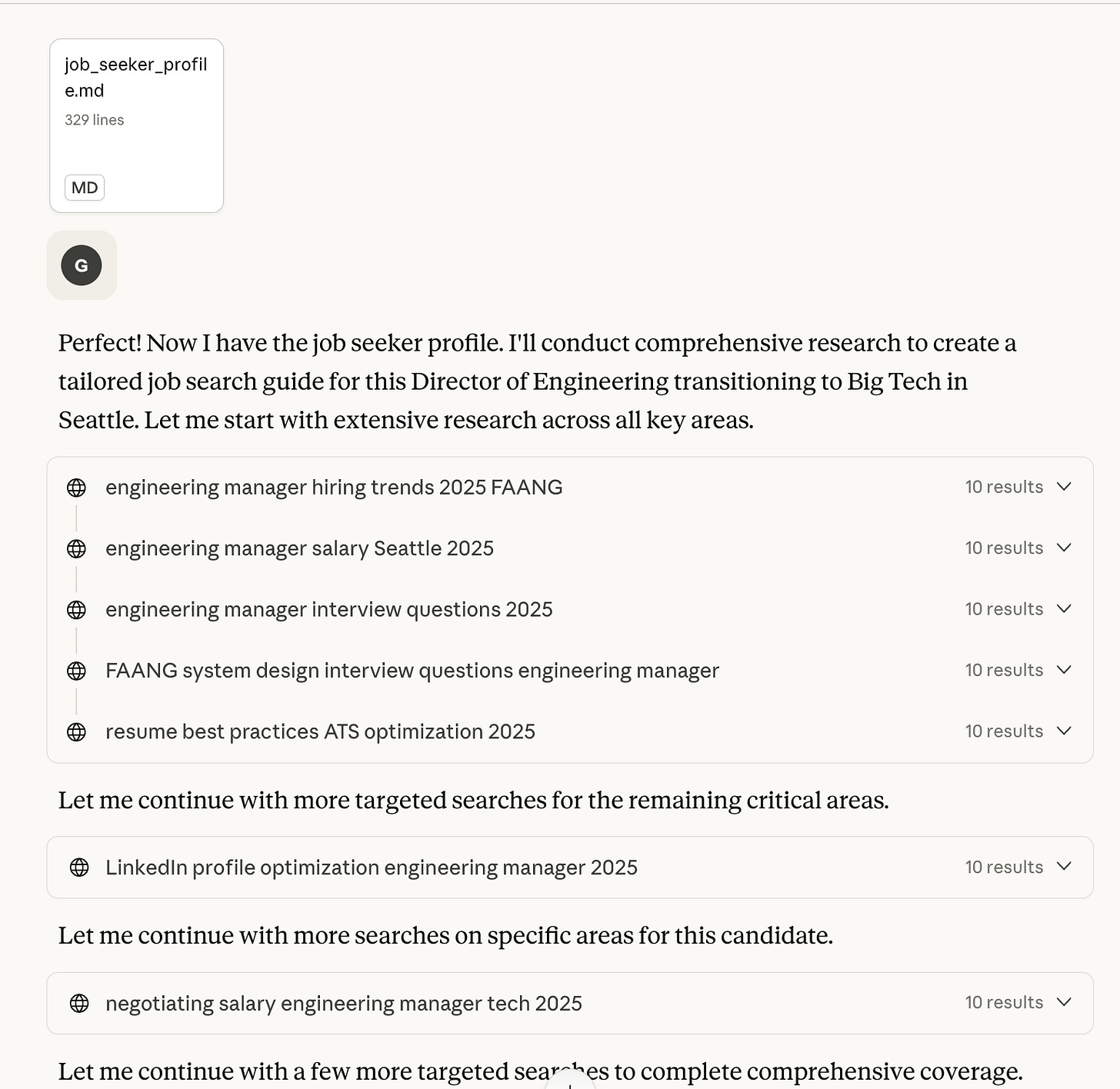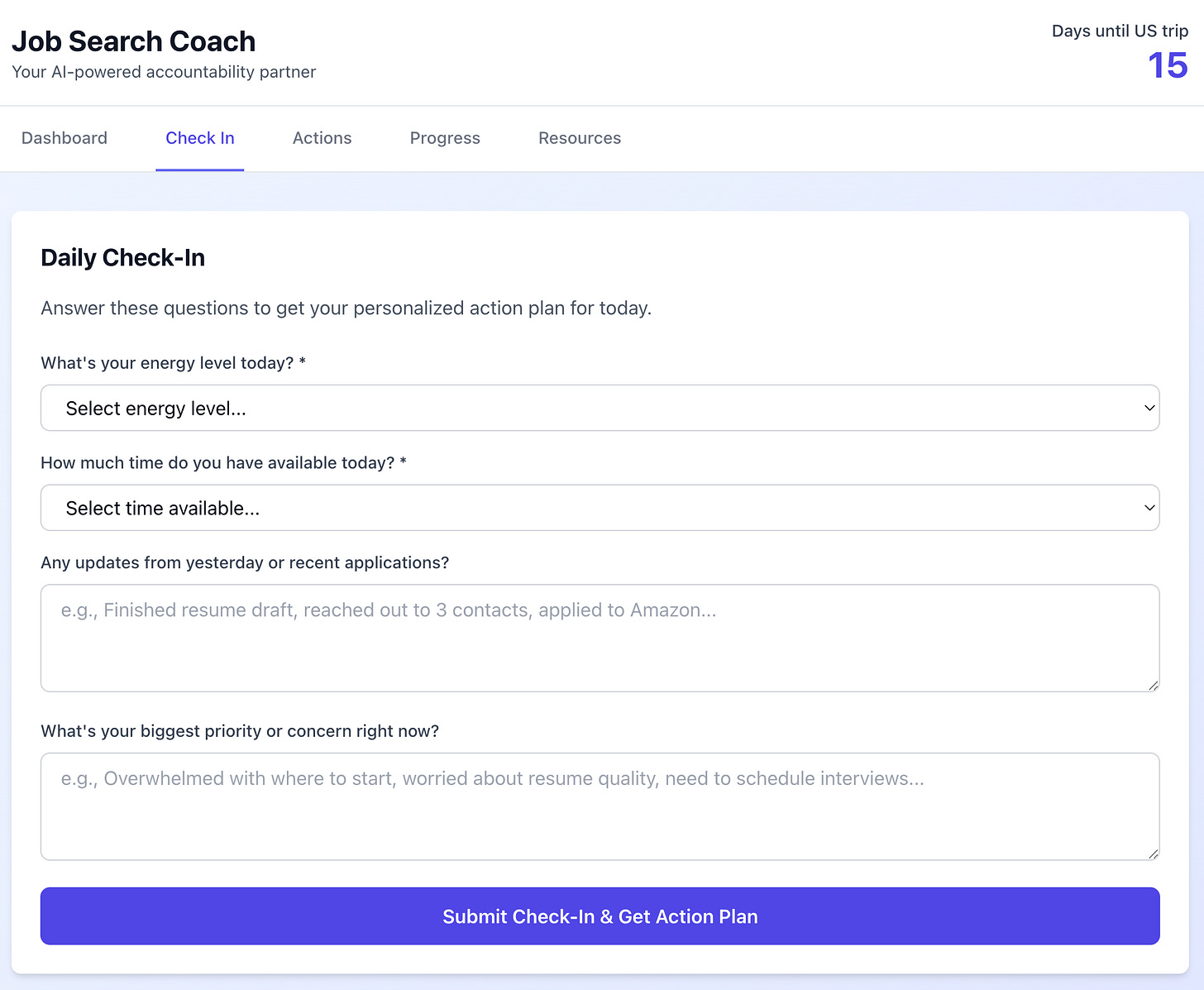Why 97% of Job Seekers Use AI Wrong (And How to Be in the 3%)
The three-step system that turns AI from a crutch into an unfair advantage
It was 2017 and I was in over my head. I spent every day walking all over Seattle, trying to find a good neighborhood for my family. I had one week to find a home and day care for two kids, all with no credit history in the US. Oh, and I also had to find a job.
Towards the end of this week I had an interview lined up with Amazon. Every spare moment I studied Amazon’s Leadership Principles and brainstormed potential stories. One of the first things I bought was a notebook, and throughout the week I filled it to the brim with notes and STAR structured narratives. When I finished a full day of interviews I was completely exhausted.
Lots of things surprised me.
The intensity of a full day of onsite interviews. The open-ended direction each interviewer chose to follow-up on my answers. How totally draining speaking in English for 7 hours straight would be. Or the tech difficulties I had to address with my recruiter to get my writing homework exercise through. Or that there even was a homework writing exercise.
These day, I coach managers and staff+ engineers trying to land their next job. And it’s not 2017, it’s 2025, and Large Language Models are a thing. If you’re in the job market today, you should use AI in your job search. Just do so efficiently.
Here’s exactly how I recommend clients leverage AI in 2025 to help them land their dream job:
Have the AI interview me to gather laser-focused context.
Have a separate AI conduct research on the current market conditions, guided by the data collected by the previous interview.
Put it all together into a daily coaching app that gives clear action items.
If you want to accelerate your job search then download the complete prompts.
The Interviewer
The corner stone of effective LLM usage is context management. I see people miss this key insight all the time. They jump straight into a coaching session with the AI without first providing the right context.
Think about it. The same AI helps people trying to find their first job in a fast food restaurant, children study for their math test, and scientists working on a ground breaking research. Without enough context, you’ll get generic and low quality responses. With the right constraints, you’ll get high quality and focused answers.
So how do you gather the right context? Here’s where most people miss out. The AI can’t help you with what it doesn’t know, and you can’t help the AI with what you can’t think about. The solution is to leverage the AI to extract the right data.
The general flow is:
Ask the AI to interview you, continuously adapting to your answers, to extract the right data points.
Summarize the entire interview as context for a separate LLM conversation.
I spent about 30 minutes answering questions about my goals, experience, and constraints. I’ve literally coached hundreds of managers in their job search, and I was surprised by how great some of these questions were.
The Researcher
The first AI gathered context about you. This second AI gathers information about the environment.
Starting with a fresh chat is important. LLMs have limited context windows. Quality goes down while latency goes up the more you fill up the context window. The anti-pattern that I see with clients is that they try to put everything into just one conversation session. And once they finish with that session, they start a new session with a blank slate!
Here’s what works. Collect information and then compress (summarize) it for a different fresh session.
The Coach
Finally, it’s time to put it all together. Instead of a chat interface, I recommend to build a bespoke app that is tailored just for you and your unique situations.
Most people default to the ... defaults. Which for LLMs is a chat interface. It makes zero sense that this interface will be the optimal interface for every situation. Going with the default chat interface may make sense for a one-off session, but not when you spend weeks (hopefully) searching for a job.
Build. Custom. Interfaces.
You can code one yourself, there are lots of great frameworks to make this easy. Or you can go the Claude Code route and have it create this app for you.
For this exercise, I went with a Claude Artifact. Using chat only, I created a dedicated coach with daily advice.
Summary
I eventually got the Amazon job. If I had to do it again today, I’d do many things differently. ChatGPT changed the rules. I charge hundreds of dollars for an hour of coaching. Now, most people can get 70% of the benefits that I offer for free.
But 97% of people waste their time playing with AI. Now you can be part of the 3%.




